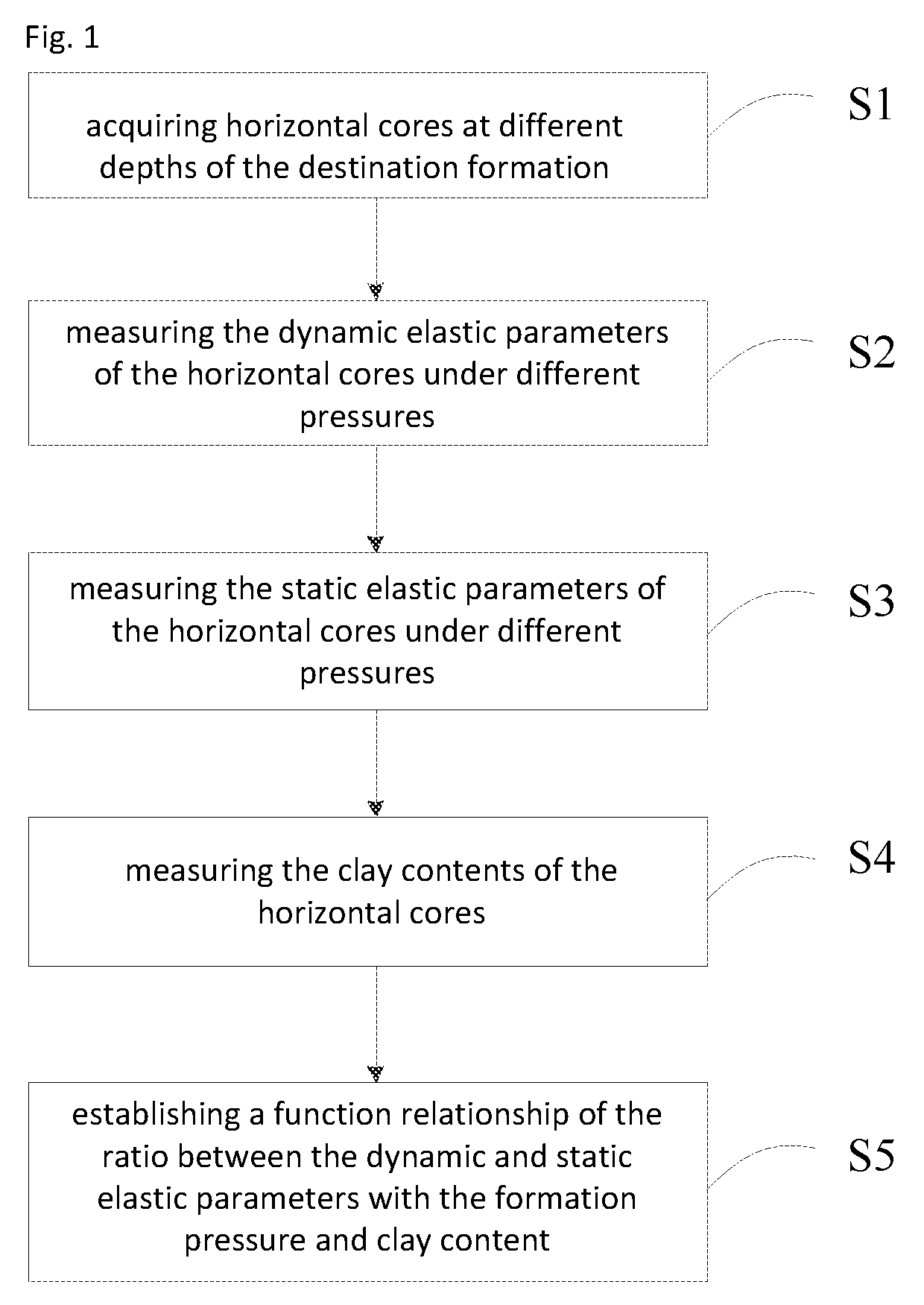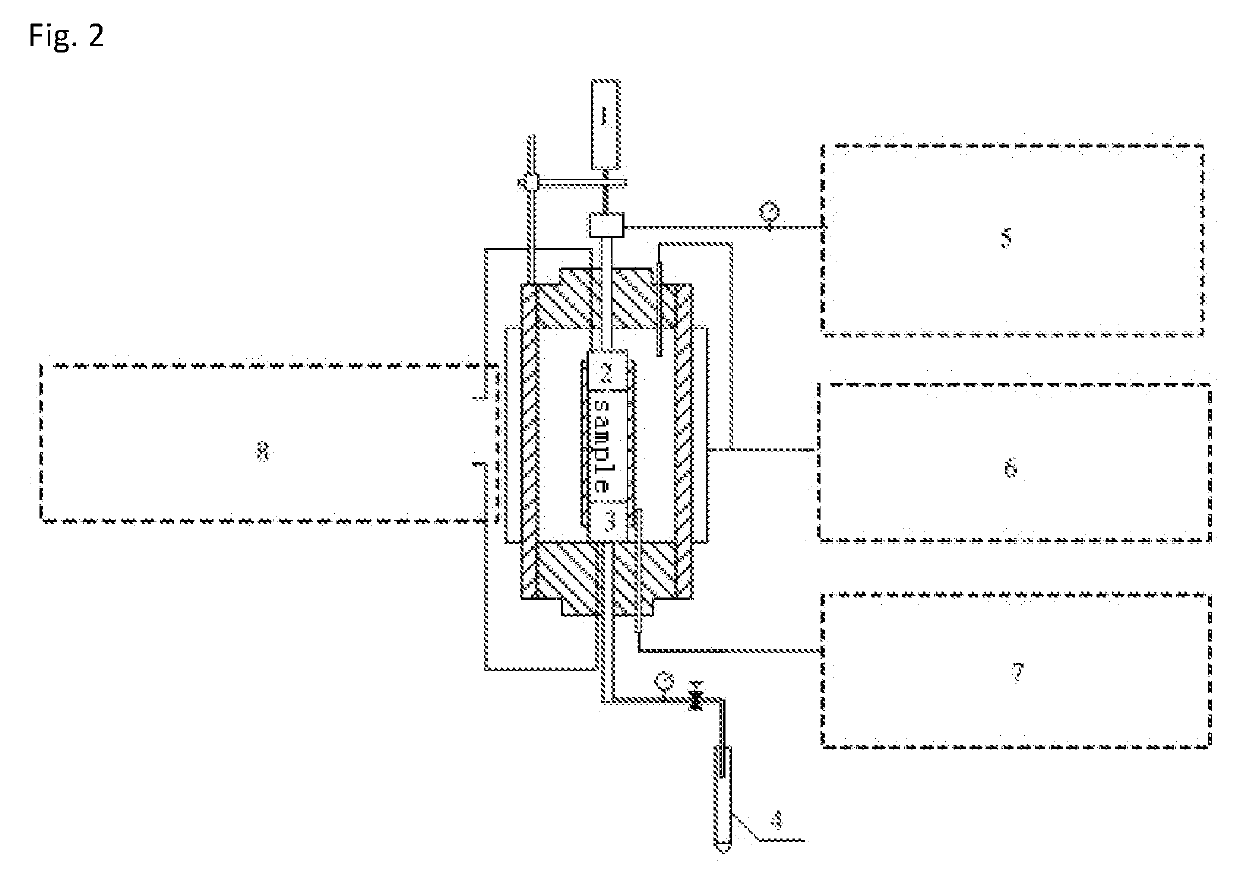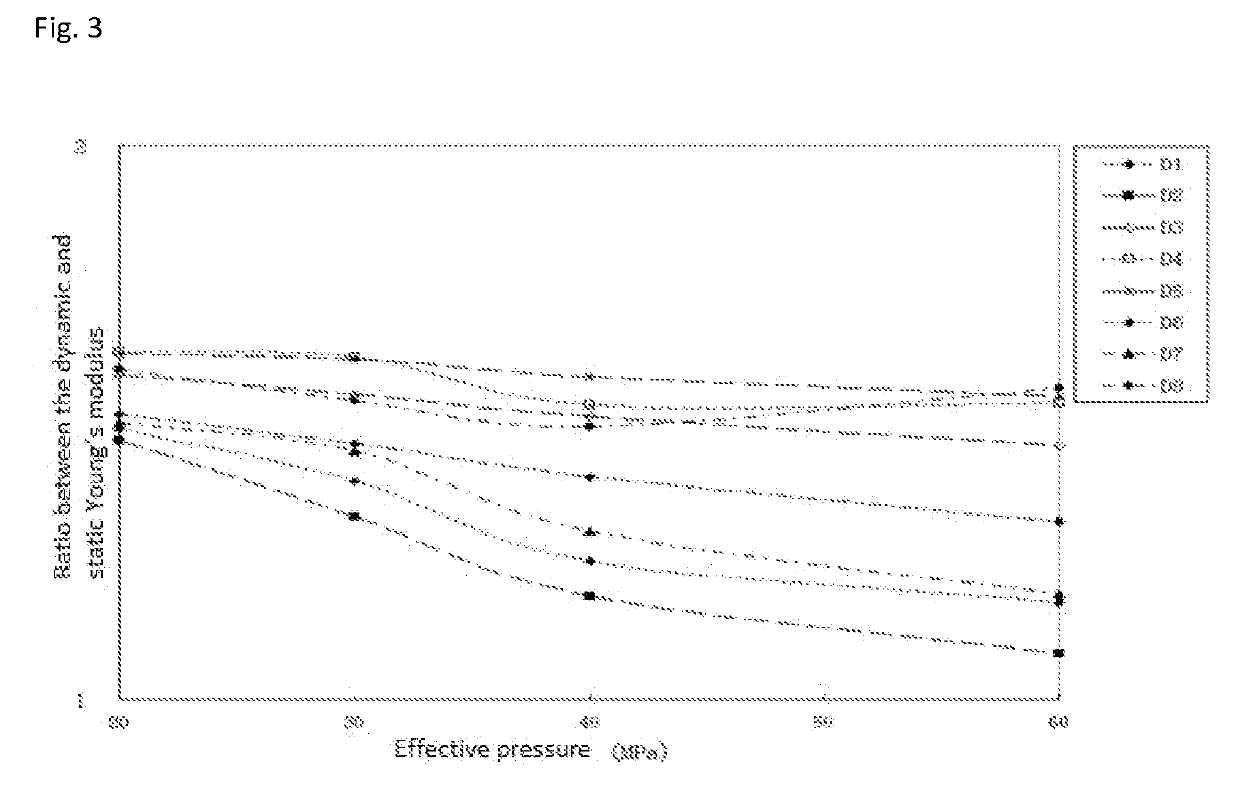Method for obtaining conversion relationship between dynamic and static elastic parameters
- Summary
- Abstract
- Description
- Claims
- Application Information
AI Technical Summary
Benefits of technology
Problems solved by technology
Method used
Image
Examples
examples
[0051]This example provides a method for obtaining a conversion relationship between dynamic and static elastic parameters (the flow of which is shown in FIG. 1), which includes the following steps:
[0052]Step S1, acquiring horizontal cores at different depths of the destination formation:
[0053]Horizontal plunger-like cores were obtained by drilling at different depths in the exploration area, with a set consisted of m=4 horizontal small cores obtained by drilling at the same formation depth; A total of n=8 sets of cores were obtained, denoted as D11, D12, D13, D14; D21, D22, D23, D24; . . . ; and D81, D82, D83, D84; wherein, each horizontal core was 2.5 cm in diameter and 8-10 cm in length.
[0054]The above cores were cut, respectively, with each divided into two smaller pieces and the cutting surface parallel to the bottom surface of the plunger-like core, and the location of cutting point must ensure that each of the two pieces after cutting was 4-5 cm in length; the cores satisfyin...
PUM
 Login to View More
Login to View More Abstract
Description
Claims
Application Information
 Login to View More
Login to View More - R&D
- Intellectual Property
- Life Sciences
- Materials
- Tech Scout
- Unparalleled Data Quality
- Higher Quality Content
- 60% Fewer Hallucinations
Browse by: Latest US Patents, China's latest patents, Technical Efficacy Thesaurus, Application Domain, Technology Topic, Popular Technical Reports.
© 2025 PatSnap. All rights reserved.Legal|Privacy policy|Modern Slavery Act Transparency Statement|Sitemap|About US| Contact US: help@patsnap.com



